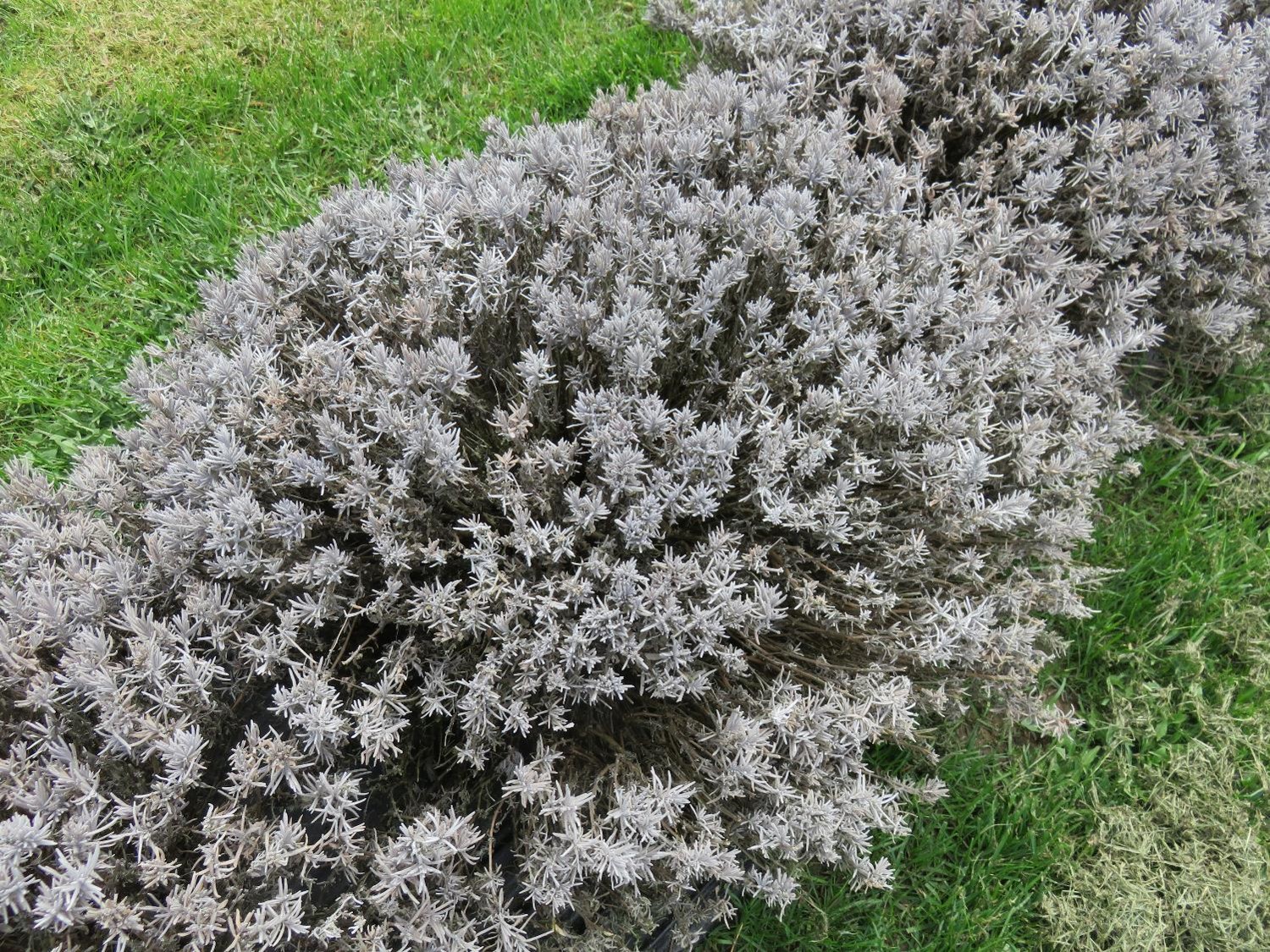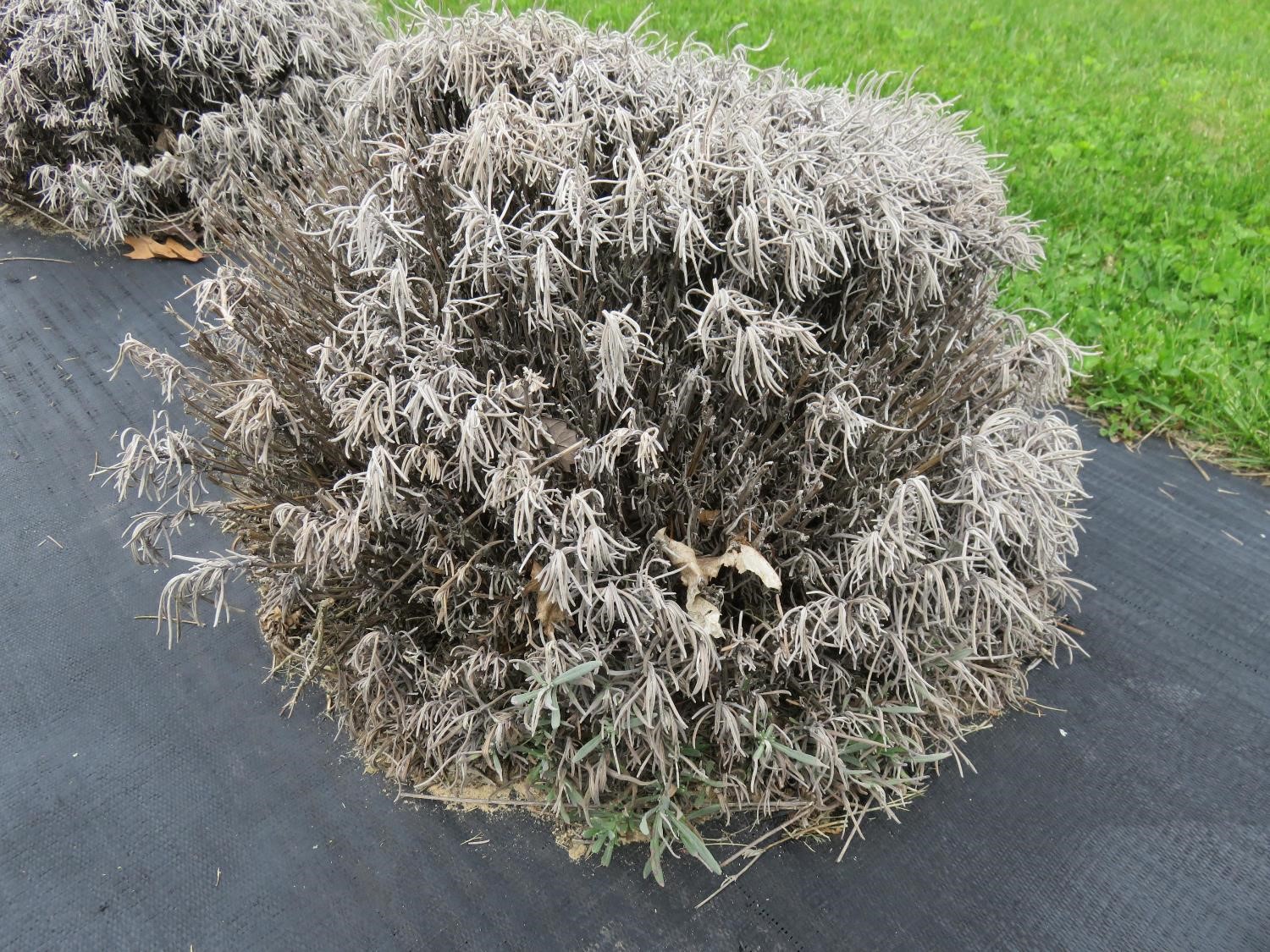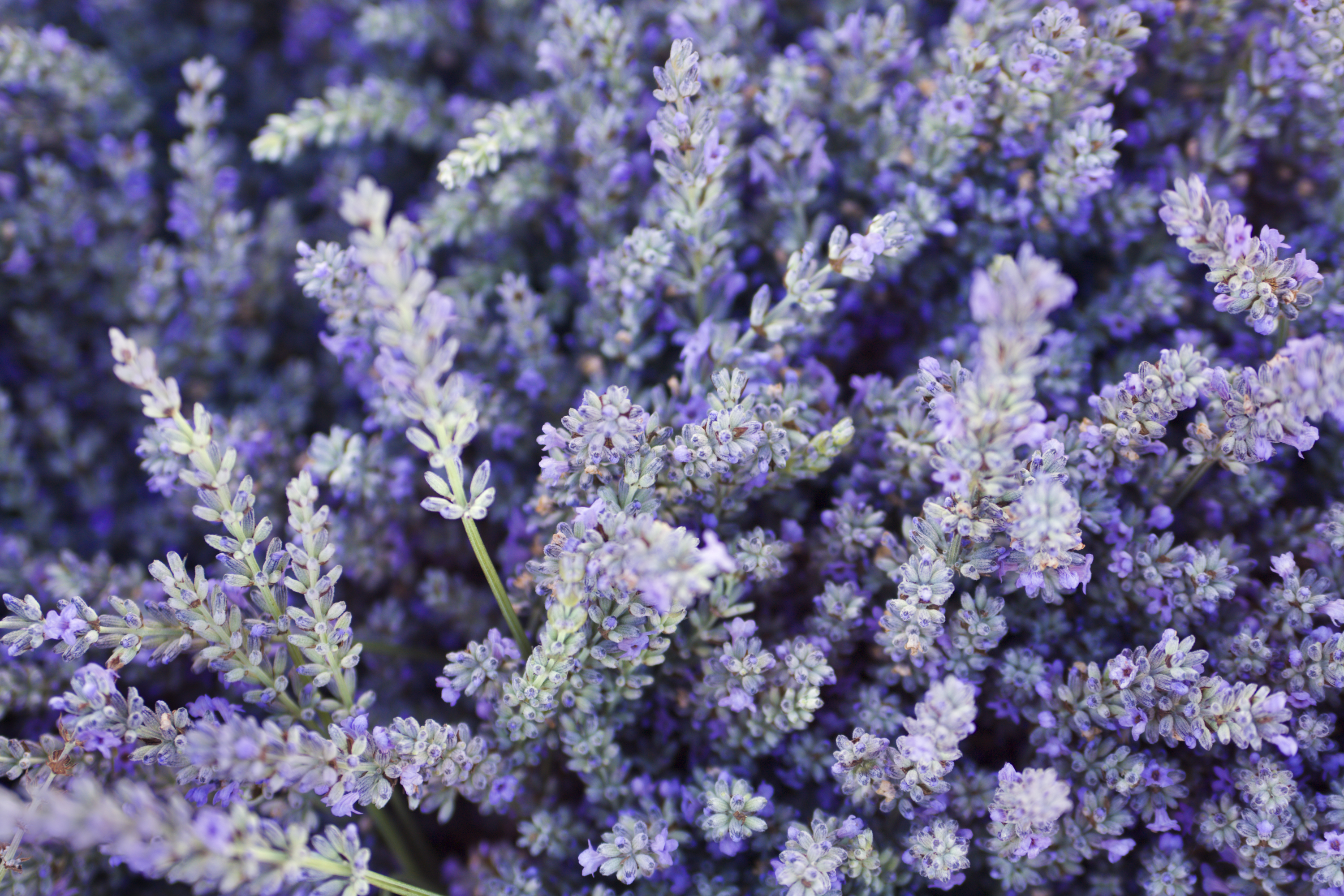Although lavender is a low-maintenance plant, there are some winter care best practices you should be aware of to guarantee your lavender survives the winter:
- You need dry roots for lavender. Because chilly winter soil may store moisture for a longer period of time, if your soil does not drain fast, you will need to amend the soil with sand or grit.
- In the winter, water lavender plants less frequently. Over the winter, established outdoor lavender plants won’t require watering. Indoor lavender plants require watering every four to six weeks.
- Due to its cold tolerance, English lavenders can be left outside all winter. Only mild winter temperatures will allow non-English lavenders to survive; they must be transplanted into pots and brought indoors for the season.
- By trimming them into a mound shape that withstands cold weather and clearing away leaves, you may get your lavender ready for winter.
Continue reading to find out exactly how to put these methods into practice to make sure that your lavender is taken care of over the winter so that it may produce a lovely bloom with potent smells in the upcoming growing season.
Table of Contents
Prepare Lavenders for winter
The two most crucial things you can do to get your lavender plants ready for winter are:
- Remove the accumulated fallen leaves that have gathered around the lavender.
- To better withstand the effects of winter weather, prune the lavender into a dense, sturdy mound shape.
For certain plants, fallen leaves might serve as a valuable mulch, but lavenders need soil that drains well and doesn’t retain too much moisture. This is so because lavenders are indigenous to Europe’s Mediterranean region, where they grow well in sandy soils with a low fertility level.
Because of their great ability to retain moisture, leaves can contribute to the development of root rot, a fungus that thrives in moist soils.
Make sure to rake (or use a leaf blower) all the decaying organic material from around your lavender plants at the end of the fall and add it to your compost pile.
You can use some gravel or sand as a mulch at this time of year to keep weeds at bay. Over time, the sand in particular will wash into the soil and make the soil more porous, which will enhance drainage.
Lavender Pruning Before Winter
Every year, lavenders should be clipped to prevent the development of woody growth, prolong their life, retain their appealing shape, and encourage the creation of more flowers.
(Read my article on how to deal with woody growth if your lavender has a lot of it.)
To truly control the shape and appearance of the lavender, the major trimming should be done at the beginning of spring. To prepare your lavender for the upcoming winter, you should also do some minor pruning on your plants in the late summer or early fall.
Whenever trimming lavender, the objective should be to create a good, compact mound shape shrub because this is seen to be the most appealing and it will guard against winter damage.
Cut back spent flower stalks, tidy up the appearance, and properly round off the lavender while pruning it for the winter.
Never cut back to the woody substance when trimming lavender plants because wood is the weakest and least resilient portion of the plant and does not regenerate.
You shouldn’t be removing a lot of the lavender’s foliage at this time of year. The most crucial step is to form the lavender into a mound so that it is more sturdy; the maximum amount of green growth you should prune back is one-third.
A mound form will stop and deflect snow, ice, or excess water from entering the lavender plant and hurting its more delicate woody base.
Watering Lavenders over Winter
Established lavender plants won’t require any extra water over the winter. Due to the higher winter rainfall in most areas, the problem with lavenders is typically too much water throughout the winter.
If there hasn’t been much rain during the winter, lavender plants in their first year of development may benefit from watering once every 4-6 weeks, but due to the decreased evaporation rate during the winter, they will probably get enough water without watering.
In order to protect them from frosts throughout the winter, it might be essential to bring potted, non-English lavenders inside. To prevent it from drying out completely in these conditions, the lavender will need a moderate amount of water over the winter.
(Read Watering Lavender in Pots for year-round watering tips.)
This should be done once every 4-6 weeks, however you should hold off on watering for the time being if the soil seems even slightly moist to the touch (when felt with your fingers).
Caring for English Lavenders over Winter
The only variety of lavender that can withstand the winter and frosts of a temperate region is the English Species.
The variant Hidcote Superior of this hardy lavender plant can withstand winter temperatures as low as -30 °C (-20 °F) in zone 5 of the United States!
Although English lavender species can withstand cold and frost, they are vulnerable to the effects of cold, wet soils, which are difficult in the winter.
Despite the term “English” Lavender, all lavenders are actually native to southern Europe’s Mediterranean region and need soil that is low in fertility and well drained.
In the winter, quick-draining soil that does not retain moisture is even more crucial to preventing the consequences of root rot (lavender roots prefer to be dry).
Prior to planting lavenders, soils should be treated with sand or gravel to a depth of 18 inches to promote sharp drainage.
If your lavender plants are already in the ground, all you need to do is carefully remove them with a fork rather than a shovel (to protect the roots) and mix in some sand or gravel, aiming for a ratio of about 30–50% sand to 50–70% compost. When amending the soil, use more sand the more naturally damp the soil is.
By amending the soil, you can prevent lavender roots from becoming entrapped in chilly, wet soil that drains too slowly.
Caring for Non English Lavenders over Winter
Most non-English lavender hybrids and cultivars will perish in severe frosts, while some are more cold-tolerant than others.
Therefore, if your area experiences winter frosts, you should choose a variety of English species.
You can transplant lavender into a pot and bring it inside, placing it in a sunny window or heated green house throughout the winter if you have non-English species of lavender planted in your yard and are worried about the cold weather.
All varieties of lavender thrive in pots because they typically offer the best drainage conditions.
Alternately, if you reside in a region with mild winters and an unseasonable frost is predicted, you can use a cloche, which is good for protecting plants from cold, or you can improvise and cover the plant with a blanket or old duvet as a temporary, occasionally needed solution.
How to Care for Indoor Lavenders over Winter
Winter care for indoor lavender plants is quite simple. If these low-maintenance plants are kept indoors, where they will be insulated from the cold, they won’t require much care and attention.
Keep indoor lavender plants away from areas like the bathroom and kitchen where there can be more humidity. Give the lavender plenty of room so that the foliage may get some airflow.
Since it won’t be able to naturally obtain water like outdoor lavenders can, you might need to water your indoor lavender once or twice over the winter to make sure it doesn’t dry out.
Check out my guide on caring for indoor lavender for more details and recommended procedures.
Caring for Potted Lavenders over Winter
Because their root systems are essentially above ground and are less well-insulated than those of planted lavender plants, lavender plants in pots are more susceptible to the cold and frosts.
Therefore, it is a good idea to bring them inside for a few nights until the cold snap has gone if you are anticipating a heavy frost or exceptionally severe weather.
This is especially true for the Spanish, French, and Italian species because they cannot endure frosts. Unless you reside in an area with moderate winters and pleasant summers, planting these lavender varieties in pots is a smart option.
The same maintenance procedures that apply to other plants also apply to potted lavenders, such as providing good soil drainage that has been improved with sand, watering sparingly or not at all during the winter dormancy, and positioning them in the sunniest part of your home or yard.
Check out Can Lavender Grow in Pots? for guidance on how to maintain potted lavenders year-round.
Key Takeaways
- In order to strengthen resistance to harsh winter weather and to deflect snow, prune lavender plants in late summer or early fall into a compact mound shape.
- To prevent the disease root rot, remove any fallen leaves and decomposing organic materials from the area surrounding the lavender plants.
- Established outdoor lavender plants don’t need any water in the winter because they can withstand drought. The plant will suffer if it receives too much water, and root rot could result. During the winter, indoor lavender plants may only need to be watered once every 4-6 weeks.
- Verify the soil’s rapid drainage. Lavenders can get root rot and die in cold, wet winter soils. To strengthen the soil’s structure and speed up infiltration and ensure that the roots of the lavender plant remain relatively dry, amend the soil with a lot of sand or gravel.
- The only species of lavender that can withstand frosts and freezing temperatures all winter long is English lavender.
- Lavender varieties from Spain, France, and Italy are not cold hardy and will most certainly perish in frosts. If you live somewhere chilly, you should move these lavender plants into pots, bring them inside, and put them in a sunny window before putting them back in the garden the following spring. Alternately, if your area has moderate winters and warm summers, you may keep them outside all year and cover them with a cloche to keep them warm when it gets chilly.
- Over the winter, indoor lavender has to be watered sporadically. Due of the winter hibernation of lavenders and their resistance to drought, once every 4-6 weeks will suffice.
FAQ
How cold is too cold for a lavender plant?
Temperature: Lavenders need a chilly, but not drafty, winter climate; at night, the temperature can drop as low as 40°F (5°C), and during the day, it shouldn’t rise above 65°F (18°C). This means you should keep them away from heaters because they will dry them out and drafty windows because they can get too cold.
Can potted lavender survive winter?
Between waterings, let the soil dry up, but don’t let it get to the point where the plant starts to wilt. Many types of lavender won’t survive a cold winter since they prefer heat. Growing lavender in pots has the advantage that it can be transferred to a safer location if necessary.
Can lavender survive 40 degrees?
Another factor that could be killing your lavender plant is the temperature. Snow doesn’t harm mature lavender plants, but freezing temperatures do. While newly planted lavender plants may perish in temperatures below 40 degrees F, mature lavender may endure lows of 10 degrees F (-12 C).
What is the highest temperature lavender can tolerate?
The plant is from the Mediterranean region, where spring and early summer temperatures typically range from 68 to 86 degrees Fahrenheit (20 to 30 degrees Celsius). After harvest, growth and regeneration are favored when the soil temperature is over 65°F (18°C). The plant, though, can unquestionably withstand lower temperatures as well.
Can I leave lavender outside in winter?
Due to its cold tolerance, English lavenders can be left outside all winter. Only mild winter temperatures will allow non-English lavenders to survive; they must be transplanted into pots and brought indoors for the season. By trimming them into a mound shape that withstands cold weather and clearing away leaves, you may get your lavender ready for winter.



